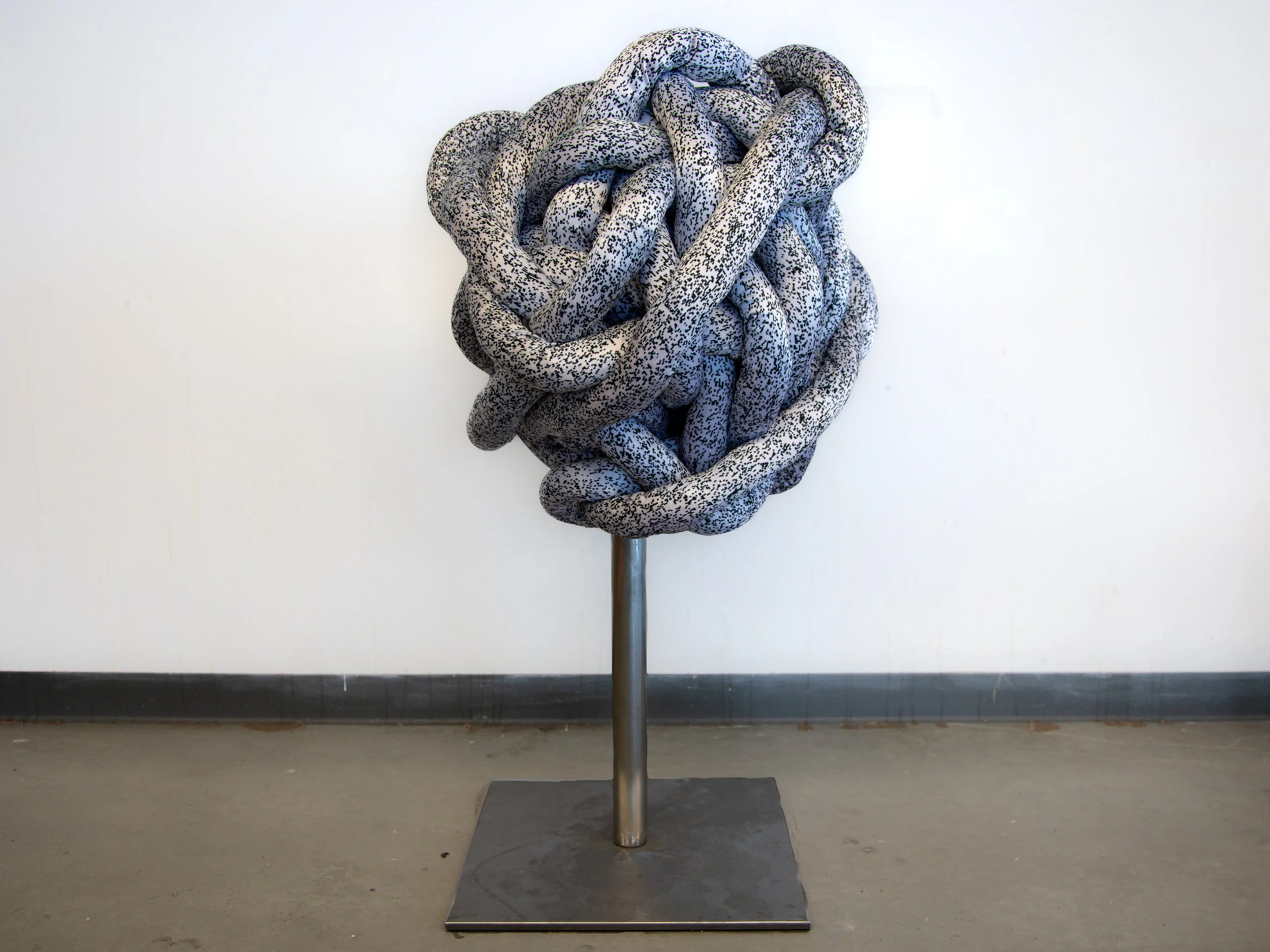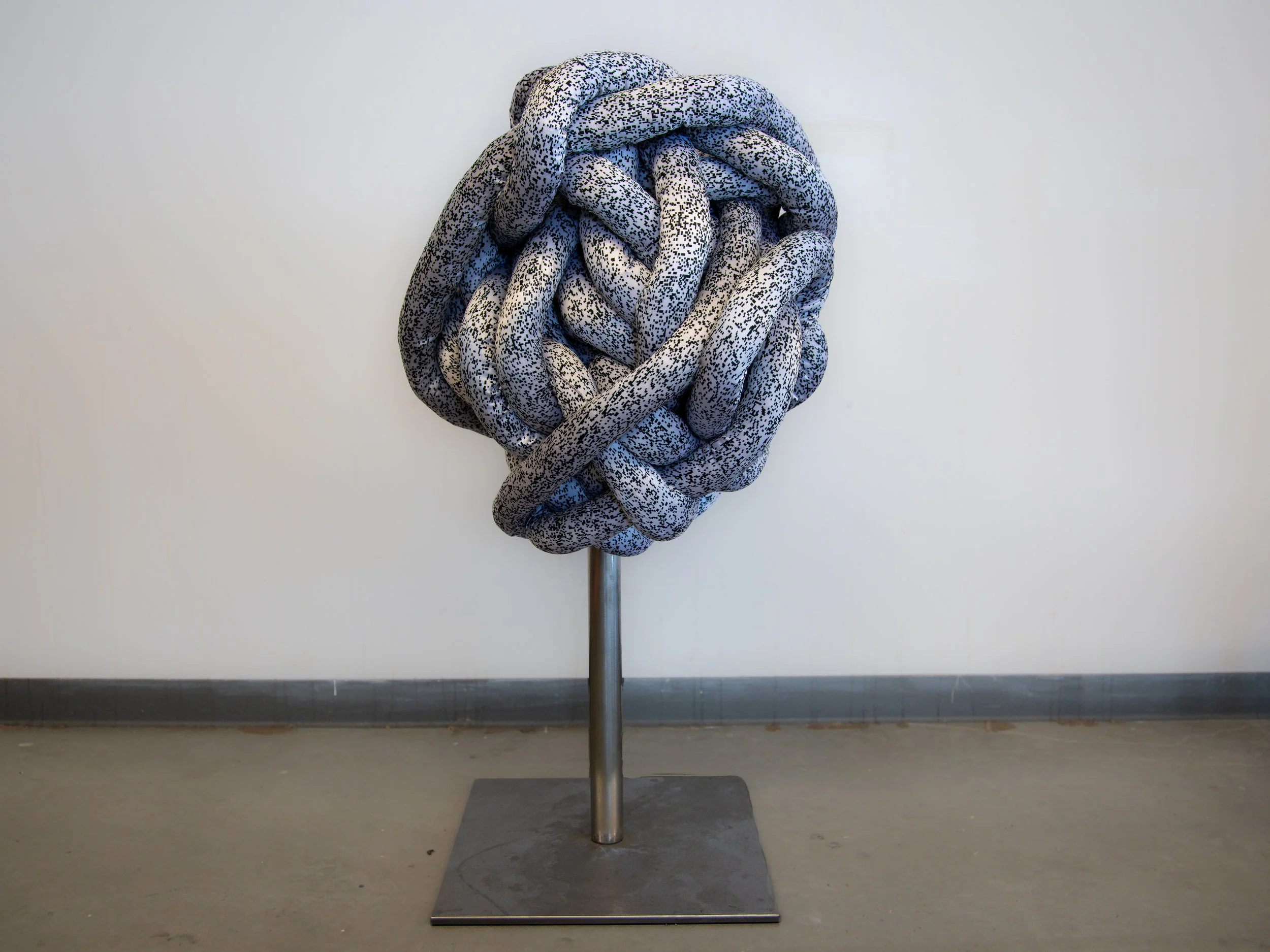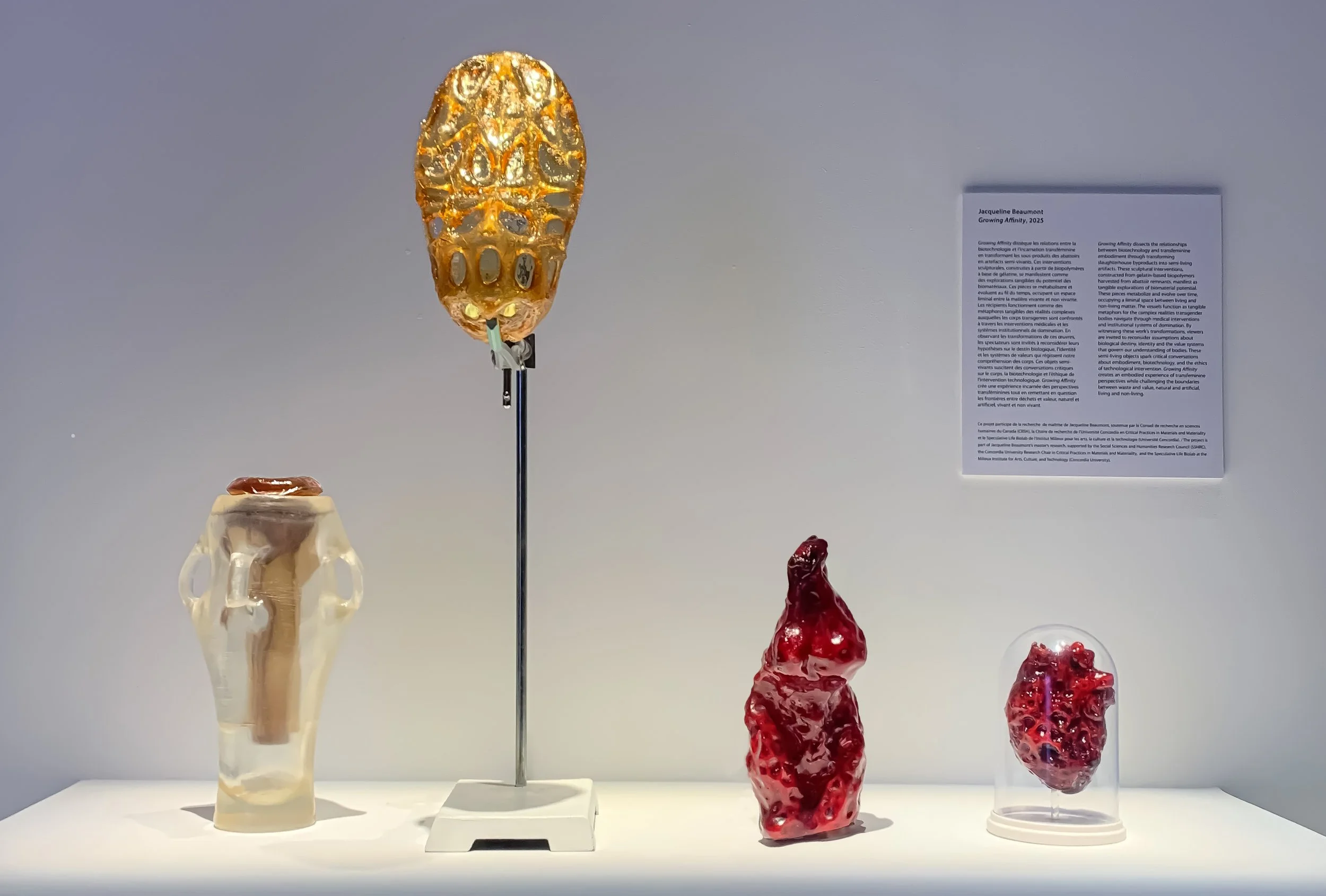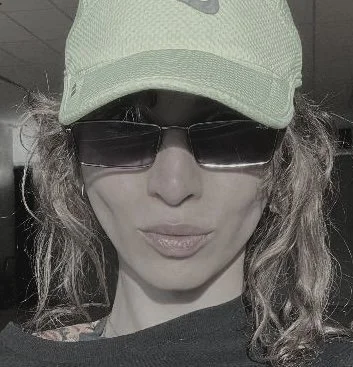Panacea
Panacea is a mixed-media exhibition that explores transfeminine health, industrial biopower, and transformational catharsis. Created by the artist collective Vol D’Anges, this multidisciplinary offering features semi-living sculptural forms by designer Jacqueline Beaumont, set in resonance with live musical performances by Deidre Opal, Syana Barbara and Su Sec. Over a week at Espace Transmission, Panacea sheds light on the fragile and urgent biopolitical realities faced by queer and transfeminine lives. It invites viewers into a space where the voices of transgender women reclaim their power, exploring the generative entanglements of body, technology, and performance.
Over five days of public exhibition, Panacea will illuminate the senses through semi-living sculptures and performances. This ephemeral interplay bridges life and art, presenting unique design, care, and engagement challenges. Panacea charts new paths for representing transgender experiences within the realm of biotechnological art, serving as a remedial sanctuary, a reckoning, and an act of imagining futures beyond the darkness of our current age.
Vol D’Anges is a collective of artists deeply rooted in transfeminist thought. They wield their practices to disrupt cultural constructs of the body, gender, transformation, and power. Their work seeks to Deconstruct, Feminize, Regenerate, and remediate societies' structures of power and control. Through performance, installation, and digital media, they dissolve entrenched narratives, offering a vision of a society that is as bold as it is compassionate.
-
Syana is a multi-disciplinary artist born & raised in Montreal of Haitian & Canadian origins. From DJ’ing at raves to self-producing her electronica EP ’19 Years of Rage’, Syana plays with sounds to insight emotions and move your body. If it’s at a rave or in your headphones, you will witness Syana’s mind! Theatrics, MC’ing and performance art, Syana is a member and representative of Mother Elle Barbara’s notorious House of Barbara.
-
Jacqueline Beaumont is a designer, artist, and researcher whose work moves fluidly between biotechnology, sexuality, nature studies, and material culture. Called toward the transformative possibilities of fibre craft, biopolymer engineering, and immersive audiovisual media, her practice questions and reimagines the boundaries of body, culture, and power.
-
Deidre Opal is a Montreal-based artist specializing in performance, electronic soundscapes, and avant-pop music production. Her work explores inner self, mental health, and physical identity through powerful industrial beats and textural electronic compositions. As a trans woman, her artistic journey parallels her personal transformation—aligning body with identity and embracing authenticity and autonomy. She has forged a life and artistic practice that powerfully embodies her truth, drawing strength from her community while maintaining an unwavering vision of the future. The opposition she faced in self-expression has only strengthened her resolve to grow in knowledge and compassion.
-
Su Seçkin (she/her) Although skeptical of labels, she is a queer, Armenian-Zaza Turkish artist based in Montréal. After studying at Istanbul Bilgi University, she continues her dance education at Concordia University. She has been a recipient of funding from Canada Council of the Arts, MAI, BC Arts Council and worked with choreographers based in North America, the Middle East and Europe. She draws inspiration from improvisation, voicing, jazz, film, ancient land-based practices, religious studies, and psychology. she sees dance as a process-driven art and her curiosity currently lies in the abundant nature of dance and how it relates to theatre, film, music, also psychology, ancient studies and embodiment.





369
this installation commemorates the 369 documented transgender murder victims in 2018 through a performance-based bioart installation. The artist preserved 369 personal tears in microcentrifuge tubes—vessels traditionally used for biological preservation—symbolically extending conservation from physical to spiritual dimensions. This meticulous collection process transforms bodily effluence into a poignant memorial, elevating tears from disposable secretions to sacred artifacts.
The adjacent heap of 631 empty tubes represents undocumented victims, highlighting systemic erasure through institutional negligence and misgendering. The work's juxtaposition of scientific methodology with emotional catharsis creates a quantifiable metric of grief while interrogating the societal devaluation of transgender lives.



Syphillus Plush
"Syphilis Plush" presents as a tactile bioinformatic sculpture—undulating polyester satin tubes adorned with pixelated patterns derived from the Treponema pallidum genome. This multidisciplinary work transcends conventional artistic boundaries, fusing digital technology with biological semiotics to interrogate human-microbial symbiosis. The sculpture's serpentine morphology, originally knotted but now liberated, invites physical engagement while challenging reductionist perspectives on living systems. Under laser illumination, the sculpture's fluid kineticism evokes microbial motility, transforming abstract genomic data into sensorial experience. This interactive quality facilitates a performative dialogue that parallels bacterial transmission and mutation, ultimately recontextualizing microbes from mere pathogens to essential constituents of our biological and cultural identity. The work eloquently crystallizes the intersection between computational representation and biological materiality, illuminating the complex entanglements between technological epistemologies and microbial ontologies.








Growing Affinity
Growing Affinity explores the intersection of trans embodiment, biotechnology, and care through semi-living sculptures that challenge our understanding of bodies and boundaries. These works emerge from the tension between medical technologies that both enable and constrain transgender expression, and the living materiality that exceeds clinical categorization.
Using bioprinting techniques and gelatin derived from slaughterhouse waste, these sculptures embody a transfeminine approach to new materialism—one that recognizes how desire, identity, and biological matter entangle in complex ways. The repurposed gelatin forms reference both medical prosthetics and the visceral intimacy of transformation, inviting viewers to contemplate the porous boundaries between technology and flesh.
This work asks: How might we imagine gender-affirming care beyond colonial paradigms? What relationships with our bodies become possible when we center trans experiences rather than clinical narratives? Growing Affinity offers no simple answers, but rather creates a space where tenderness toward trans bodies can flourish alongside critical engagement with the systems that shape them.


